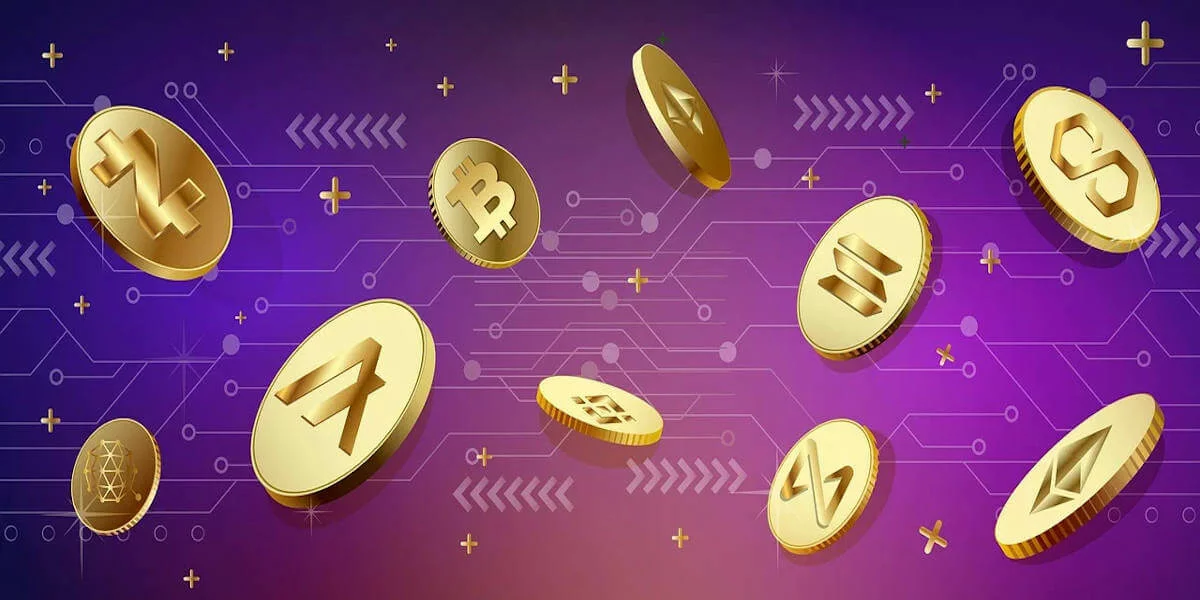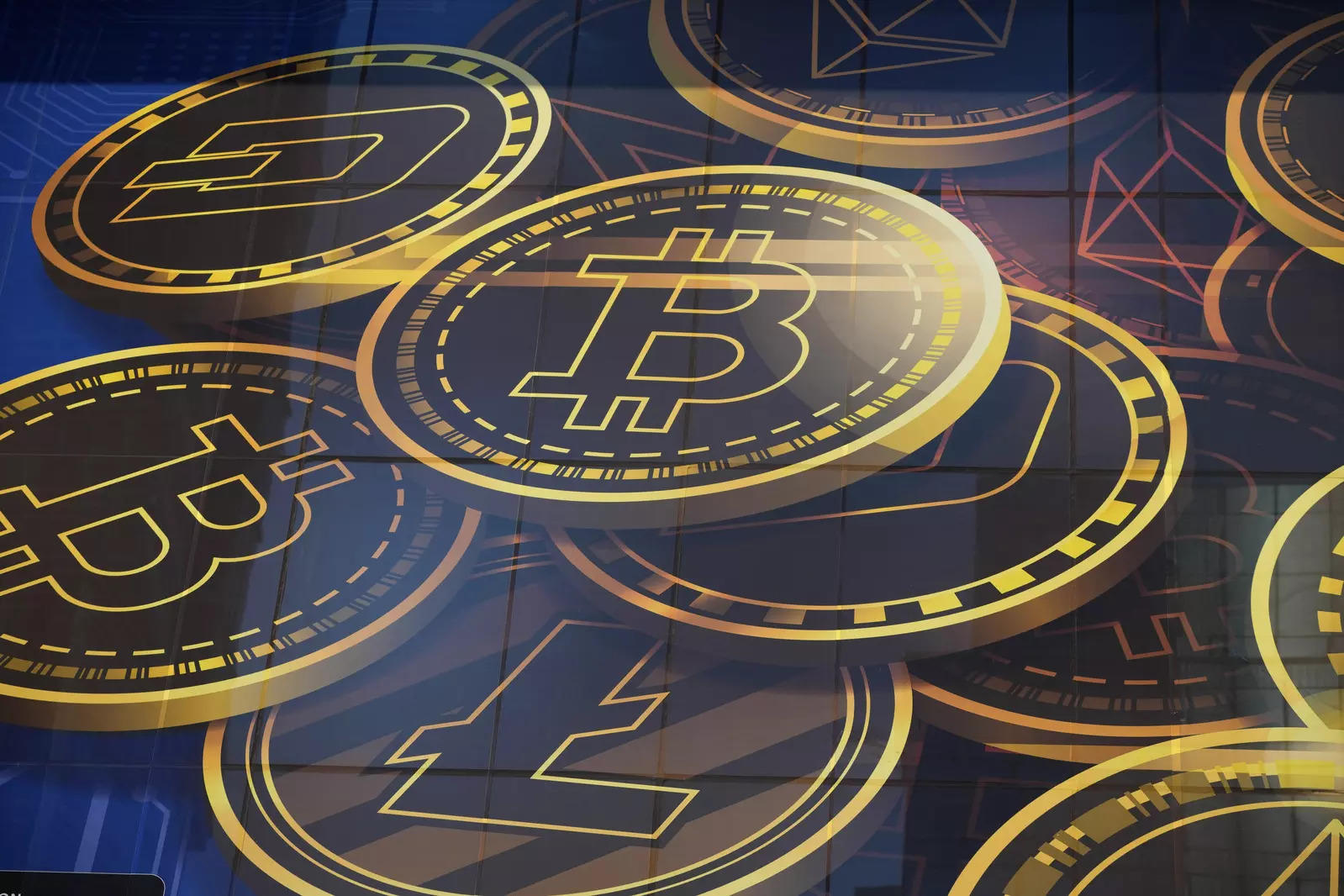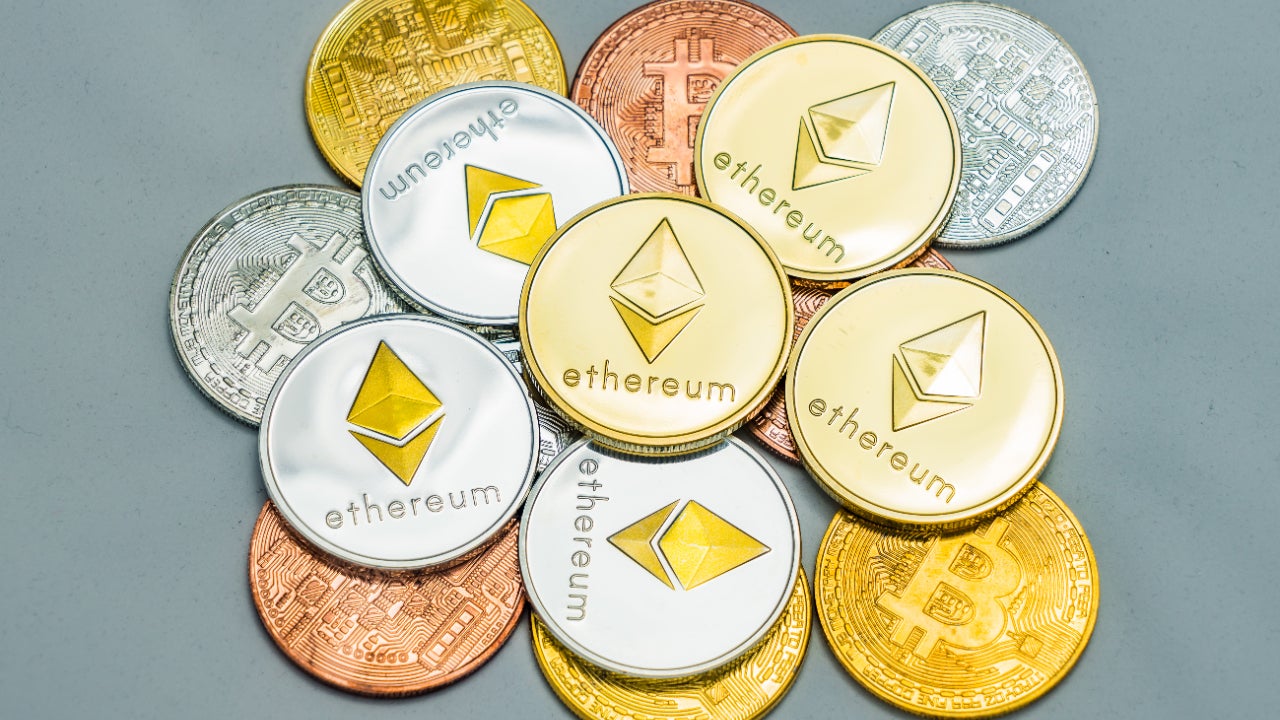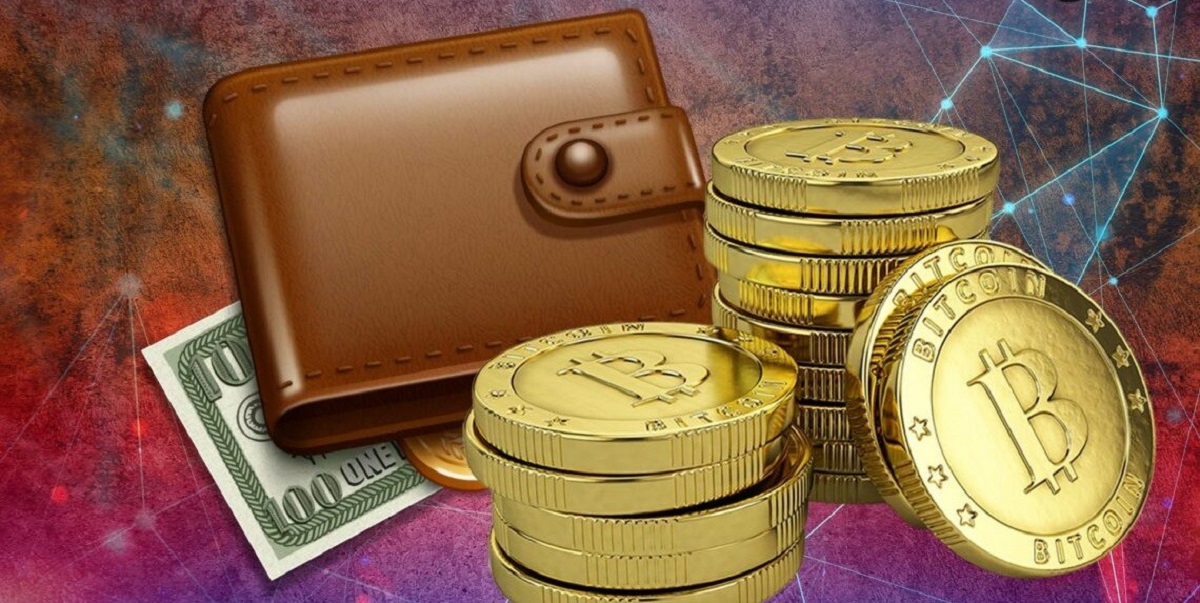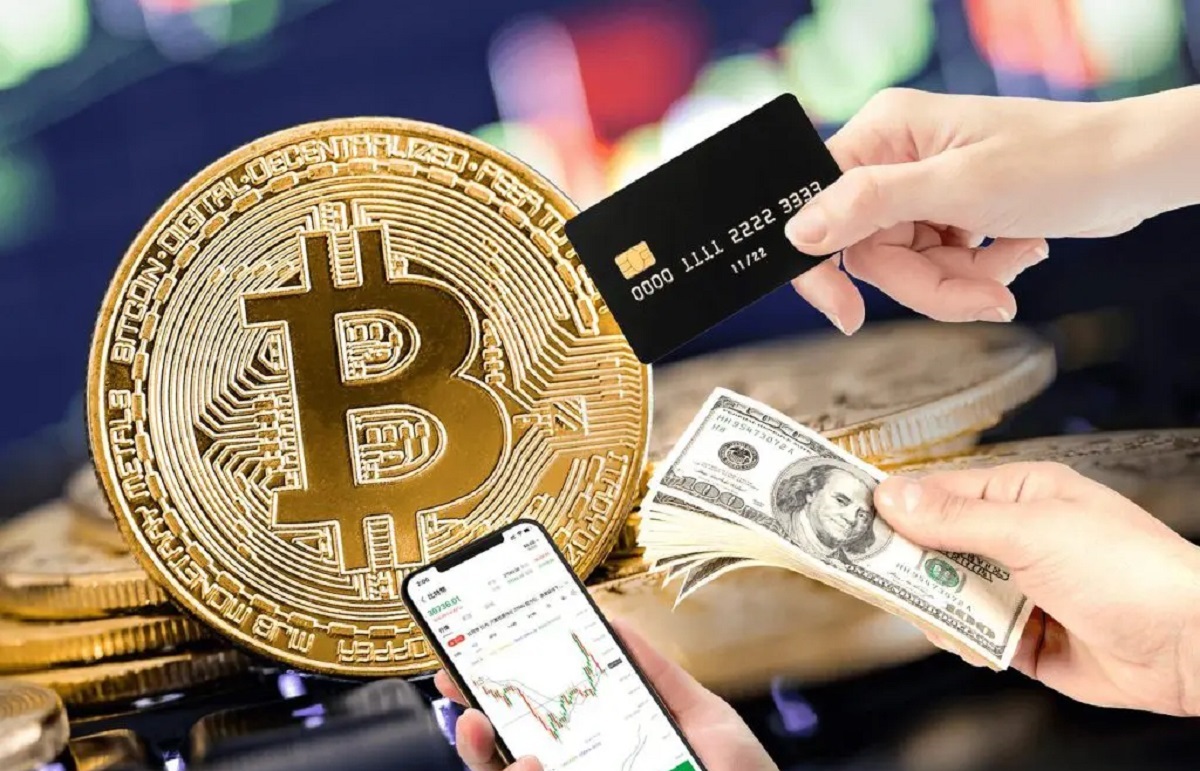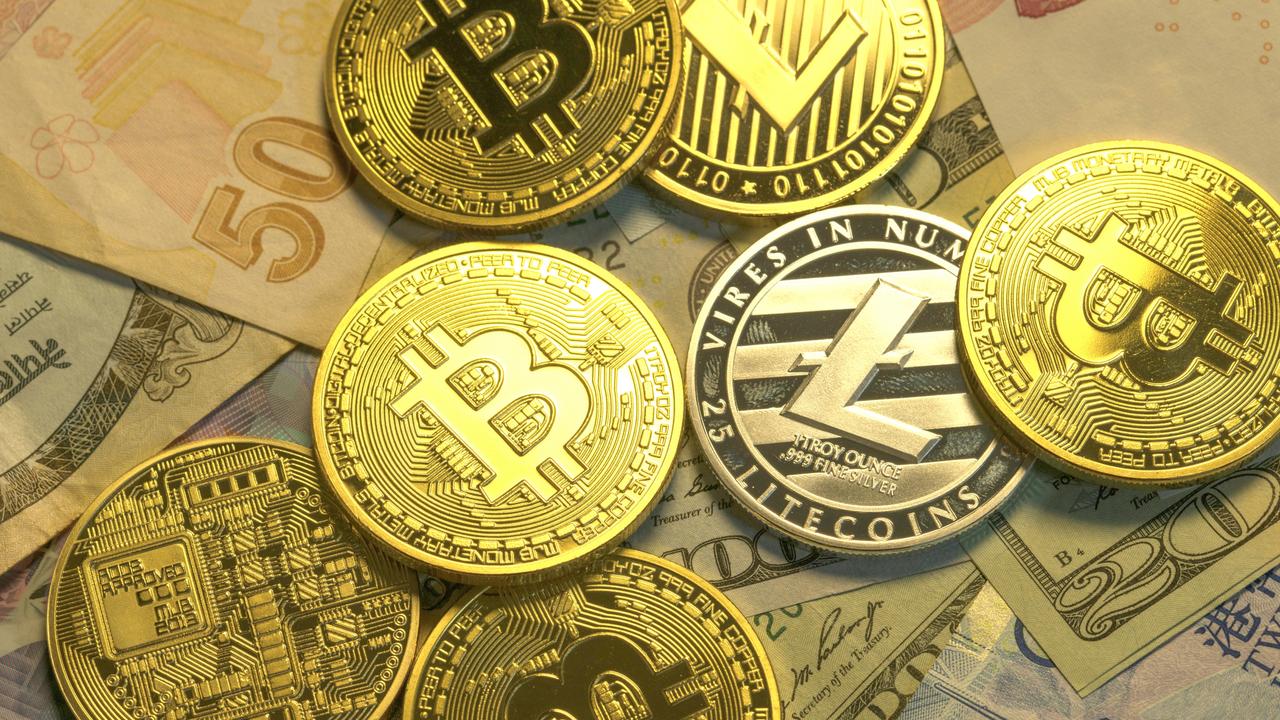Introduction
The rise of digital technology has revolutionized the way we conduct financial transactions. Traditional forms of currency, such as physical cash and bank transfers, are increasingly being replaced by digital currencies. These digital currencies, also known as cryptocurrencies, have emerged as a new and innovative way to store, transfer, and transact value online.
In today’s digital landscape, there are various types of digital currencies that serve different purposes and functions. Understanding these different types can help individuals and businesses navigate the evolving world of digital finance.
This article will explore the different types of digital currencies and provide an overview of their characteristics and use cases. From cryptocurrencies to central bank digital currencies, stablecoins to tokenized assets, we will delve into the fascinating realm of digital currencies and their role in the global economy.
So, whether you’re a curious individual looking to expand your knowledge or a business considering adopting digital currencies, let’s dive into the various types of digital currencies and explore their unique features and benefits.
Cryptocurrencies
One of the most well-known and widely used types of digital currency is cryptocurrencies. Cryptocurrencies are decentralized digital assets that utilize cryptography for secure transactions and control the creation of new units. The most famous example of a cryptocurrency is Bitcoin, which was introduced in 2009 by an anonymous person or group known as Satoshi Nakamoto.
What sets cryptocurrencies apart is their decentralized nature, meaning they operate without the need for a central authority like a government or financial institution. This decentralized system is made possible through blockchain technology, a distributed ledger that records and verifies transactions across a network of computers.
Cryptocurrencies offer several advantages over traditional forms of currency. Firstly, they provide greater privacy and security, as transactions are pseudonymous and protected by advanced cryptographic algorithms. Additionally, cryptocurrencies enable fast, borderless transactions with lower fees compared to traditional banking systems.
Furthermore, cryptocurrencies have gained popularity as investment instruments. Many individuals and institutional investors see cryptocurrencies as an asset class with the potential for high returns. However, it’s important to note that the volatile nature of cryptocurrencies means they also carry a higher level of risk.
In recent years, the number of cryptocurrencies has proliferated, with thousands of alternative coins, or altcoins, being introduced. Examples of popular altcoins include Ethereum, Ripple, and Litecoin, each with its own unique features and use cases.
Overall, cryptocurrencies represent an exciting and rapidly evolving form of digital currency. Their decentralized nature, privacy features, and potential for high returns make them an attractive option for individuals and businesses alike.
Central Bank Digital Currencies (CBDCs)
Central Bank Digital Currencies (CBDCs) are a type of digital currency that is issued and regulated by a country’s central bank. Unlike cryptocurrencies, CBDCs are fully backed by the government and hold the same value as traditional fiat currencies.
The primary goal of CBDCs is to provide a digital counterpart to physical cash, offering a secure and convenient medium of exchange. CBDCs aim to harness the benefits of digital technology while maintaining the stability and trust associated with fiat currencies.
CBDCs can be classified into two main types: retail CBDCs and wholesale CBDCs. Retail CBDCs are designed for everyday use by the general public, allowing individuals to hold and transact with digital currency directly through the central bank. In contrast, wholesale CBDCs are intended for financial institutions and facilitate interbank transactions, improving efficiency and transparency in the financial system.
One of the motivations behind the development of CBDCs is to address the rise of alternative digital currencies, such as cryptocurrencies and stablecoins, which operate outside the control of central banks. By introducing their own digital currencies, central banks can maintain control over monetary policy, financial stability, and regulatory oversight.
CBDCs offer several potential benefits. They could enhance financial inclusion by providing access to secure and affordable digital payment systems for those who may not have access to traditional banking services. CBDCs can also streamline cross-border transactions, reducing costs and increasing efficiency in international trade.
However, CBDCs also pose challenges and considerations. Privacy and security concerns need to be addressed to protect user data and mitigate the risk of cyber attacks. Additionally, the impact on the traditional banking system, monetary policy, and financial stability needs to be carefully evaluated and managed.
As of now, several central banks around the world are researching and piloting CBDC initiatives. China, for example, has made significant progress in developing and testing its digital yuan, while other countries like Sweden, Canada, and the Bahamas are exploring the potential of CBDCs.
Overall, CBDCs represent a significant development in the digital currency landscape, offering the benefits of digital transactions while maintaining the stability and trust associated with traditional fiat currencies. The successful implementation of CBDCs could reshape the global financial system and accelerate the transition towards a more digital economy.
Stablecoins
Stablecoins are a type of digital currency that aims to address the price volatility often associated with cryptocurrencies. Unlike cryptocurrencies like Bitcoin or Ethereum, stablecoins are designed to have a stable value by being pegged to a reserve asset, such as a fiat currency or a basket of assets.
The primary purpose of stablecoins is to provide a reliable medium of exchange and store of value, making them more suitable for everyday transactions and financial applications. Stablecoins offer stability while still harnessing the benefits of blockchain technology and the efficiency of digital transactions.
There are different types of stablecoins, including fiat-backed stablecoins, commodity-backed stablecoins, and algorithmic stablecoins. Fiat-backed stablecoins are pegged to a specific fiat currency, such as the US Dollar or Euro, and are backed by reserves held in a bank account. Commodity-backed stablecoins, on the other hand, are pegged to the value of a physical asset, like gold or oil. Algorithmic stablecoins use smart contracts and algorithms to maintain price stability.
Stablecoins offer several benefits. They provide a reliable store of value that can be easily transferred across borders and used for everyday transactions without the risk of price fluctuations. Stablecoins also offer faster settlement times and lower transaction fees compared to traditional banking systems, making them an attractive option for remittances and cross-border payments.
Furthermore, stablecoins have gained popularity in the decentralized finance (DeFi) space. They are used as collateral for lending and borrowing, allowing users to access liquidity and earn interest on their assets. Stablecoins also enable the creation of decentralized stablecoin exchanges and marketplaces, fostering greater financial accessibility and innovation.
However, stablecoins also face challenges. Regulatory concerns arise as stablecoins may fall under existing financial regulations, especially those related to money laundering, consumer protection, and financial stability. Transparency and auditability of the underlying reserves also need to be ensured to maintain public trust.
Despite the challenges, stablecoins have seen significant adoption and growth in recent years. Tether (USDT), USD Coin (USDC), and Dai are among the most well-known and widely used stablecoins in the market today.
Overall, stablecoins offer a practical solution for bridging the gap between traditional financial systems and the world of cryptocurrencies. With their stable value and versatility, stablecoins have the potential to play a pivotal role in the future of digital finance.
Tokenized Assets
Tokenized assets represent another type of digital currency that provides fractional ownership and transferability of real-world assets. By leveraging blockchain technology, tokenization enables the representation of physical assets, such as real estate, artwork, or commodities, as digital tokens on a decentralized network.
Tokenization offers several advantages in the world of asset management and investment. It allows for increased liquidity, as tokens can be easily bought, sold, and traded on digital platforms. Fractional ownership of assets also becomes possible, enabling investors to own smaller portions of high-value assets.
Furthermore, tokenization reduces the barriers to entry for traditional investment opportunities, opening up access to a broader range of investors. This technology streamlines the cumbersome processes associated with buying, selling, and managing assets, reducing costs and increasing efficiency.
Tokenized assets can also benefit the underlying assets themselves. For example, real estate tokenization can facilitate the division of property ownership and streamline the process of transferring property rights. Artwork tokenization allows for increased transparency in the art market, making it easier to authenticate and verify ownership.
Security tokens and non-fungible tokens (NFTs) are two common forms of tokenized assets. Security tokens represent ownership in an underlying asset and are subject to securities regulations. They can provide investors with financial rights, such as dividends or profit-sharing, similar to traditional securities.
On the other hand, non-fungible tokens (NFTs) are unique digital tokens that represent ownership or proof of authenticity of a specific asset. NFTs have gained significant attention in the world of digital art, collectibles, and virtual real estate. They allow for the creation of unique digital assets that cannot be duplicated or replicated.
While the tokenization of assets offers exciting opportunities, there are challenges that need to be addressed. Regulatory frameworks and legal frameworks need to evolve to accommodate tokenized assets and ensure investor protection. Additionally, market liquidity and valuation methods for tokenized assets are areas of ongoing development and refinement.
Despite the challenges, tokenized assets have the potential to democratize investment opportunities and reshape traditional financial markets. They provide accessibility, liquidity, and transparency, unlocking new avenues for investors and asset owners alike.
Utility Tokens
Utility tokens are a type of digital currency that are issued by blockchain-based projects to enable access to specific products or services within their ecosystem. These tokens serve as a means of exchange and provide users with certain privileges or functionalities within the platform.
Unlike cryptocurrencies or stablecoins, utility tokens are not designed as a store of value or investment instrument. Instead, they are created with the purpose of facilitating interactions and transactions within a particular decentralized network or platform.
Utility tokens are typically used in decentralized applications (DApps) and blockchain ecosystems. They can be used to pay for transaction fees, access premium features, participate in voting or governance mechanisms, or obtain goods and services within the platform.
One of the key characteristics of utility tokens is that their value is often derived from the demand for the products or services offered by the issuing project. As the platform gains popularity and more users require the utility token for their interactions, the demand for the token can increase, potentially resulting in an appreciation in value.
However, it’s important to note that the value of utility tokens can also be influenced by factors such as market sentiment, speculation, and overall market conditions. Utility tokens are subject to market volatility and may experience price fluctuations.
Utility token sales are commonly conducted through Initial Coin Offerings (ICOs) or Token Generation Events (TGEs), where the project’s tokens are offered to the public in exchange for funding. Investors who participate in these sales typically acquire utility tokens with the expectation of future utility value within the platform.
It is worth mentioning that the regulatory landscape surrounding utility tokens is still evolving in many jurisdictions. Depending on their characteristics and the applicable securities laws, utility tokens may fall under regulatory scrutiny and require compliance with relevant regulations.
Overall, utility tokens play a crucial role in incentivizing participation and facilitating transactions within decentralized networks and platforms. They enable users to interact with blockchain-based applications and access specific functionalities or benefits, fostering the growth and development of the decentralized ecosystem.
Security Tokens
Security tokens are a type of digital currency that represent ownership or rights in a financial asset, similar to traditional securities. These tokens are regulated by securities laws and offer investors certain financial rights, such as equity, profit-sharing, or debt ownership, depending on the underlying asset.
Unlike utility tokens or cryptocurrencies, security tokens are subject to regulatory oversight and must comply with securities regulations in the jurisdictions where they are offered. The main purpose of security tokens is to provide a digital representation of traditional financial instruments, such as stocks, bonds, or investment funds.
By using blockchain technology, security tokens offer several advantages over traditional securities. They provide increased liquidity by enabling fractional ownership of assets and facilitating the trading of tokens on digital asset exchanges. Blockchain-based smart contracts also automate certain processes, such as dividend distribution or compliance with transfer restrictions.
Investing in security tokens allows for greater accessibility and global participation in investment opportunities. Tokenizing traditional securities can open up investment opportunities to a wider range of investors, including those who may have previously faced barriers to entry due to capital requirements or geographical restrictions.
Furthermore, the transparency and efficiency provided by security tokens can reduce administrative costs associated with traditional securities transactions, such as clearing, settlement, and custody. The use of blockchain technology enhances visibility, auditability, and security in the issuance, transfer, and management of security tokens.
However, it’s important to note that security tokens and the offering of security token sales, also known as Security Token Offerings (STOs), must comply with securities regulations to ensure investor protection. Issuers of security tokens need to adhere to registration and disclosure requirements, as well as anti-money laundering (AML) and know-your-customer (KYC) regulations.
The regulatory landscape surrounding security tokens varies across jurisdictions, and it’s essential for market participants to understand and comply with the applicable securities laws to avoid legal complications.
Security tokens represent an innovative way to digitize and democratize the traditional securities market. By leveraging blockchain technology, they offer greater accessibility, transparency, and liquidity, potentially transforming the way financial assets are bought, sold, and managed.
Non-Fungible Tokens (NFTs)
Non-Fungible Tokens (NFTs) have gained significant attention in the digital world as a unique form of digital currency. Unlike cryptocurrencies or utility tokens, which are fungible and can be exchanged on a one-to-one basis, NFTs are unique and indivisible.
NFTs represent ownership or proof of authenticity of a particular digital asset, such as artwork, collectibles, virtual real estate, or even virtual goods in video games. Each NFT is distinct and cannot be replicated or replaced, making it a one-of-a-kind digital item.
Blockchain technology, typically utilizing Ethereum’s ERC-721 or ERC-1155 standards, underpins NFTs, providing a secure and transparent way to verify ownership, provenance, and transaction history of these digital assets.
The main characteristic that distinguishes NFTs is their ability to provide verifiable scarcity and uniqueness. This attribute has unlocked new possibilities in various industries, such as art, gaming, and entertainment.
In the art world, NFTs have revolutionized digital art ownership and monetization. Artists can create and sell their digital artwork as NFTs, with each token representing the original, authentic piece. NFTs enable artists to be fairly compensated for their work and provide collectors with proof of ownership.
Moreover, NFTs have made digital collectibles more valuable and accessible. They allow enthusiasts to own unique and rare digital collectibles, such as virtual trading cards or virtual items in video games. Ownership of NFTs can be easily transferred and traded, fostering a vibrant secondary market for these digital assets.
While NFTs have gained popularity, it’s important to note that their value is subjective and driven by the demand and perceived value attached to the digital asset itself. The market for NFTs can experience volatility and trends, with some assets selling for exorbitant prices while others may have more modest valuations.
However, the issuance and trading of NFTs also come with environmental concerns. The energy consumption associated with blockchain transactions and the carbon footprint generated by certain blockchain networks have raised questions about the sustainability of NFTs.
Despite the challenges and debates, NFTs represent an innovative and exciting development in the digital currency space. They empower creators, artists, and collectors, offering new ways to interact with and monetize digital assets. As the technology continues to evolve, NFTs have the potential to reshape the way we perceive and own digital content.
Conclusion
The world of digital currency is vast and continually evolving. From cryptocurrencies to central bank digital currencies, stablecoins to utility tokens, tokenized assets to non-fungible tokens (NFTs), each type of digital currency offers its own unique features and use cases.
Cryptocurrencies, such as Bitcoin, have revolutionized the way we transact and store value, with their decentralized and secure nature. Central bank digital currencies (CBDCs) aim to provide a digital counterpart to traditional fiat currencies, offering convenience and efficiency in everyday transactions.
Stablecoins provide stability and reliability by being pegged to a reserve asset, making them suitable for everyday transactions and investment purposes. Tokenized assets enable fractional ownership and transferability of real-world assets, opening up new avenues for investment and liquidity.
Utility tokens facilitate transactions and interactions within decentralized platforms, while security tokens represent ownership or rights in traditional financial assets, adhering to securities regulations. Non-fungible tokens (NFTs) have captured attention for their unique ability to represent ownership and authenticity of digital assets, revolutionizing the art world and collectibles market.
As digital currencies continue to gain traction, it is essential to understand their characteristics, benefits, and challenges. Individuals, businesses, and regulators must navigate the evolving landscape and adapt to the opportunities and complexities that arise.
Whether you are an investor looking to diversify your portfolio, a business exploring digital payment solutions, or an artist seeking new avenues for monetization, understanding the different types of digital currency can empower you to make informed decisions and embrace the possibilities of a digital future.
As the digital currency space continues to innovate and expand, it is important to stay informed, be mindful of regulatory requirements, and embrace the potential that these new forms of currency offer. By embracing digital currencies, we can unlock new possibilities for financial inclusion, decentralization, and economic growth in the digital age.







